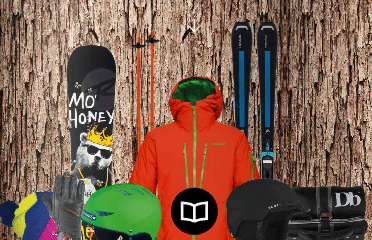So you’ve decided to take the plunge and book a ski trip. All I can say is congratulations and welcome to the community! As much of a cliché as my next statement will be, and I do apologise in advance, skiing is a lot like Marmite: you either love it and spend your entire summer cursing the sun for chasing our beloved snow away, or hate it and leave the Alps swearing “never again” whilst shuddering at the thought of the cold, white stuff and the ski kit you will never see again.
Fortunately, most people fall into the “Lurve” camp, and this new monthly ski guide is dedicated to helping you first-timers become fully prepared for the ski holiday ahead of you with all the essential ski kit.
Learning to ski or snowboard is an investment. I won’t lie to you – it can be expensive buying all of the necessary gear to get you started. And the list of ski essentials is quite long. But once all the items have been ticked off your shopping list, there’s absolutely no reason why it shouldn’t last for a couple of winter seasons.
So what exactly do you need?
- Jacket: the crux of your ski ensemble, it needs to protect you from the cold (that’s a given) but also from the heat when you exert yourself. Choose a waterproof yet breathable coat to keep you comfortable.
- Salopettes (your ski trousers): again, choose something that is comfortable and fully waterproof as chances are you’ll be on the floor a lot. Try to ensure either your trousers or jacket has a strong colour so you can be easily spotted.
- Thermals: incredibly important as these will remove the sweat and moisture from your skin in order to keep you dry. Don’t choose cotton as these will absorb the moisture and leave you sitting on the chairlifts feeling cold and wet. You’ll need a thin to medium layer or two between your thermals and your jacket too – multiple thin layers are better than one thick one.
- Socks: ski boots are not the comfiest of footwear so investing in some thick socks will provide a good cushion for your feet and your shins. They’ll also prevent the cold from setting in.
- Gloves: cold hands are unbearable when in the mountains, so look for gloves that have a good waterproof rating (effective gloves will be around 10,000mm), an insulation layer for warmth and perhaps an inner lining for extra comfort.
- Goggles: I would recommend goggles instead of sunglasses as they’re more protective from the wind. You may need a few different lenses – generally a yellow tint is good for low-light conditions whilst mirrored lenses work well on the sunnier days.
- Helmet: it’s the age-old debate that has gripped snow enthusiasts for decades, but if you’re new to the slopes then a helmet will only be beneficial to you to protect your head from any falls you will have, especially on slopes that are busy or when travelling at fast speeds.
- Woolly hats: hats are a great idea for wearing while après skiing and when strolling home late at night after the temperatures have dropped. You won’t want to wear your helmet all evening (although they can of course still be unexpectedly useful in wild dancing accidents).
- Skis/snowboard and boots: don’t worry about purchasing your own equipment until you’re 100% sure you’re going to carry on with the sport. There are plenty of good rental shops in every resort so start by renting.
Before buying any ski kit, head to a retailer and try everything on. Specialist retailers can give the best advice, and their assistants are likely to be huge snow-enthusiasts themselves and will be more than happy to share their knowledge with you.
Oh and don’t forget your lip salve and sunscreen for those few bits of flesh that aren’t covered by the above.
To follow the Altitude Verbier team:
https://www.facebook.com/altitudeverbier/
https://www.instagram.com/altitudeverbier/
https://twitter.com/AltitudeVerbier

